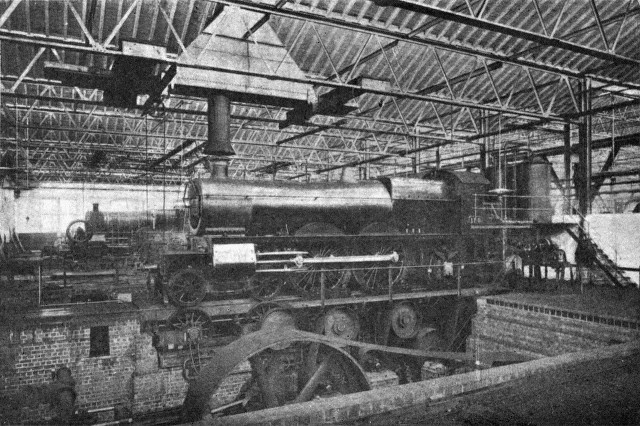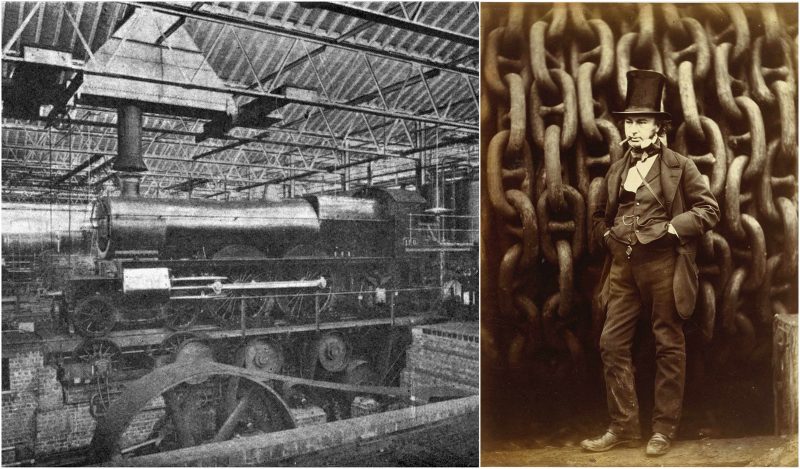History is usually a series of serious events that have taken place over the centuries, decades, and years. However, there are some interesting pieces of history that get overlooked; one of these was caused by a ham sandwich. Swindon was a small agricultural town before the arrival of a Victorian engineer known as, Isambard Kingdom Brunel, and his railway. However, people did not traditionally know that the town’s existence is all because of a ham sandwich that was thrown out.

The Wiltshire town is now marking the 175th anniversary of the decision to open railways in the area. Thanks to that, the town was, and is, now one of the busiest of industrial cities. Yet, according to legend, the decision to build the works was actually inspired by a half-eaten sandwich.
Brunel’s Great Western Railway (GWR) had needed a central repair at the halfway point to London and Bristol. Felicity Jones, GWR historian, said that Brunel and his superintendent Daniel Gooch were driving along the railway looking for space to build the locomotive repair works. She added that the men knew they needed somewhere along the London to Bristol line, but they couldn’t make the decision together.
So from there, they ate their lunch while they were on the move. Brunel suddenly got an idea and said that wherever his half-eaten ham sandwich lands, that is where they will build their locomotive repair station. When he finally threw it away, it landed at Swindon.

Jones explained that there were several reasons, other than the landing of the sandwich, why the men would have located the works in Swindon. Some of the things that they may have taken into consideration included the availability of vacant land and the area’s steep gradients. This meant that the trains on the Swindon to London line had to stop and load up on fresh coal and water in order to make it. Whether or not that sandwich was actually involved in the decision, the men’s choice to build in that area started a fantastic transformation.
At the time, Swindon was surrounded by open farmland and was home to a population of only 2,500 people. Within some years of the opening of the railway works, it was employing more than 40,000 workers. The authorization for the works was given to the men on February 25, 1841. The construction began immediately, making the 300-acre area operational on January 2nd, 1843. Brunel had also built a village of terraced stone houses near the works in order to accommodate the number of workers he would have. The Railway Village still stands today as a legacy of the engineer’s fantastic impact on the town.
Graham Carter, who works at Swindon Heritage magazine, said that Old Swindon is the area that the locals call Old Town. It existed for many centuries as an insignificant market town. However, when GWR arrived in 1841 and began building the Railway Village just below the hill, they were literally building a whole new town. It became known as New Swindon.

Carter added that most of the people who lived in the town were skilled men who were imported to work on the railway maintenance and servicing facility that was created by Gooch and Brunel.
The two Swindon towns were quite independent of each other until amalgamation in 1900. By then, Swindon had transformed into a major industrial city. Brunel’s GWR Works had transformed the small Swindon town from a tiny settlement to a city with the population of 2,500 and created a bustling city center. Graham also said that the population of New Swindon grew from zero in 1841 to around 2,500 in 1851. This equaled the population of Old Swindon in just 10 years.
By the time Old Town and New Swindon amalgamated as a new borough in 1900, the population was about 45,000, although Old Town had barely changed. Swindon has been growing non-stop ever since 1841 and is still growing.
